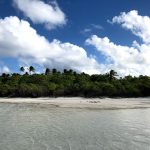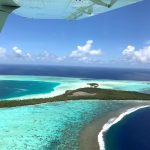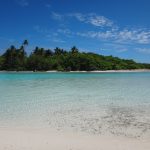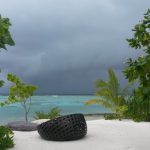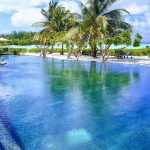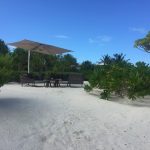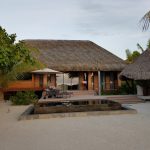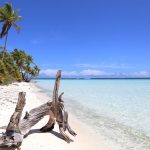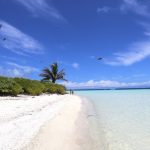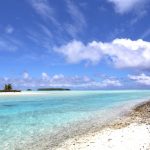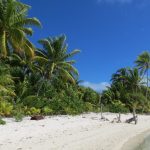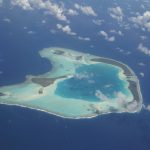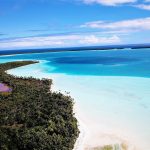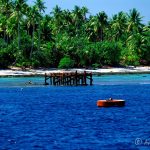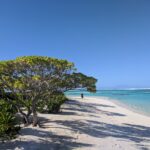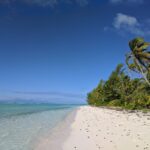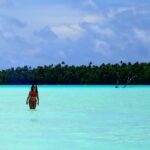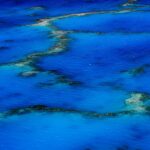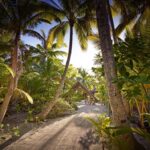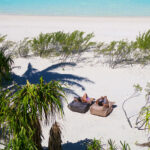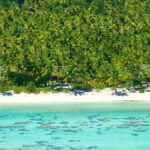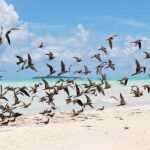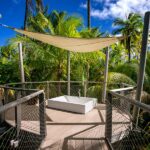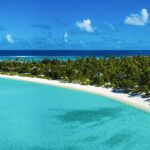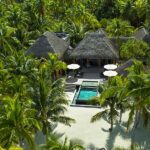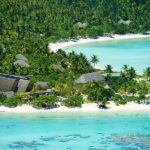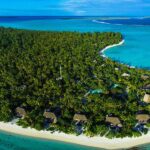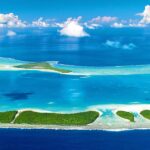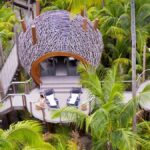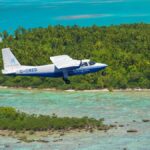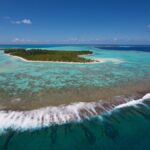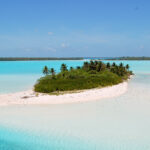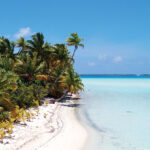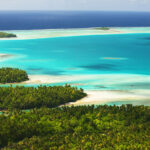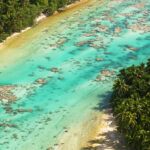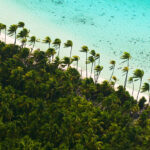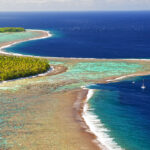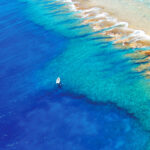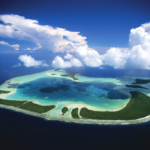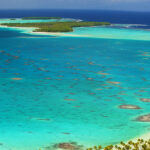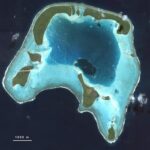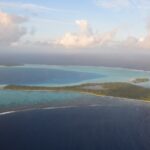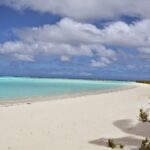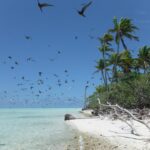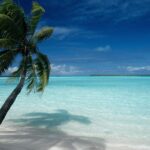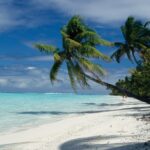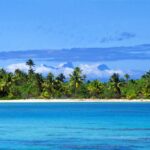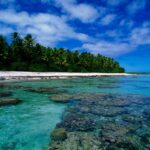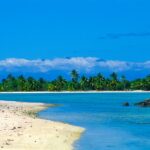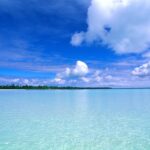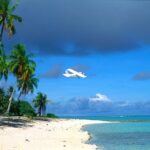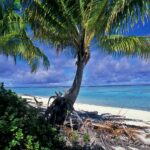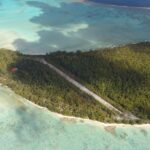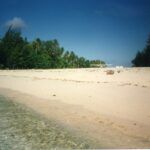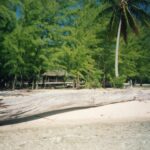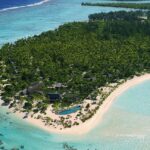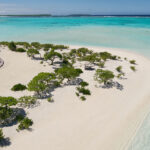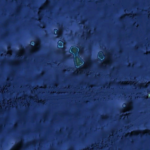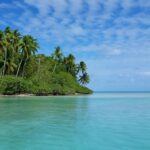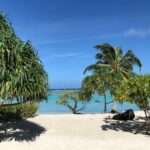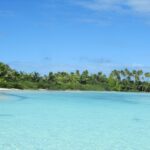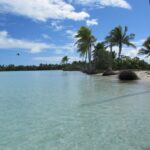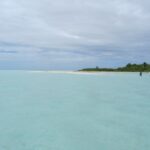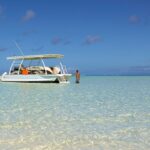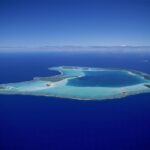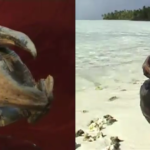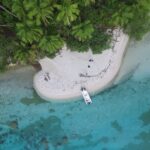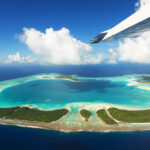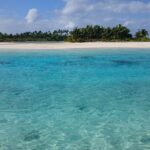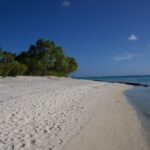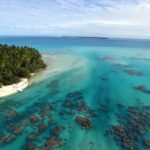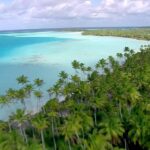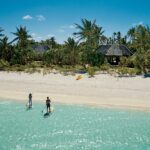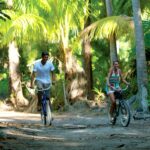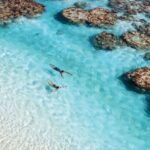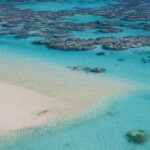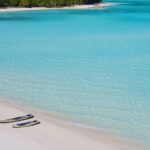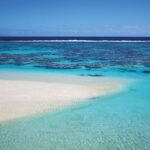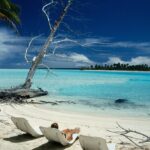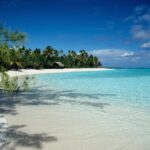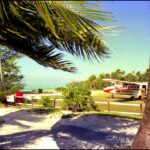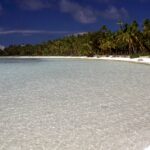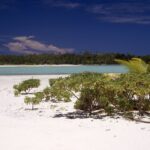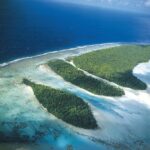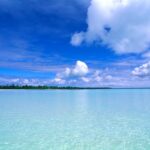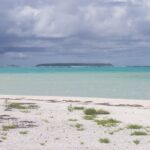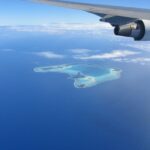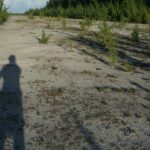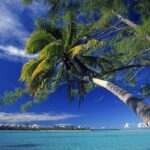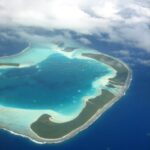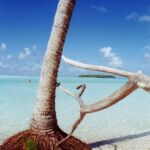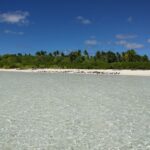
Tetiaroa Atoll is an atoll about 50km north of Tahiti. The area of the atoll (above the water) is 6 km2. 1450 acres (585ha) of sand are divided into 12 moths with different surfaces. The lagoon is approximately 7 kilometers wide and 30 meters deep. The atoll does not have a reef opening (deep channel), which makes access to the ship almost impossible. The atoll has a perfectly clear blue lagoon, has coral heads around the beaches, plenty of water, bright white beaches, and typical of the atoll, plenty of coconuts and other vegetation adapted to the saline soil.
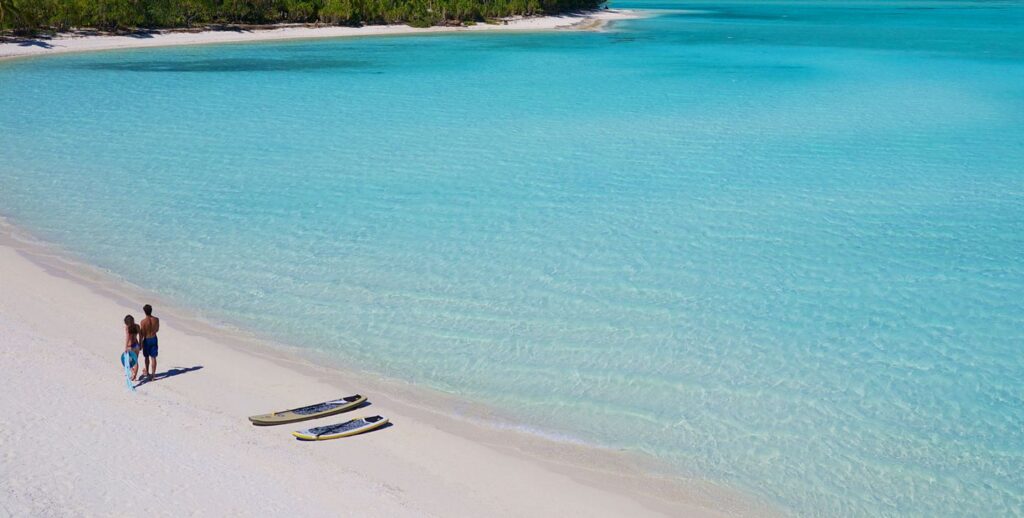
On Onetahi Island there is a Brando Resort and a runway. In 1960, when Marlon Brando was filming “Mutiny on Bounty” in Tahiti and Morea, he saw this atoll. And then he bought it. Wanting to live on the atoll, Brando built a small village on Motu Onetahi in 1970. It consisted of a runway for airplanes, 12 simple bungalows, a kitchen, a dining room and a bar, and everything was built from local materials: coconut wood, thatched roofs and even large sea shells for sinks.
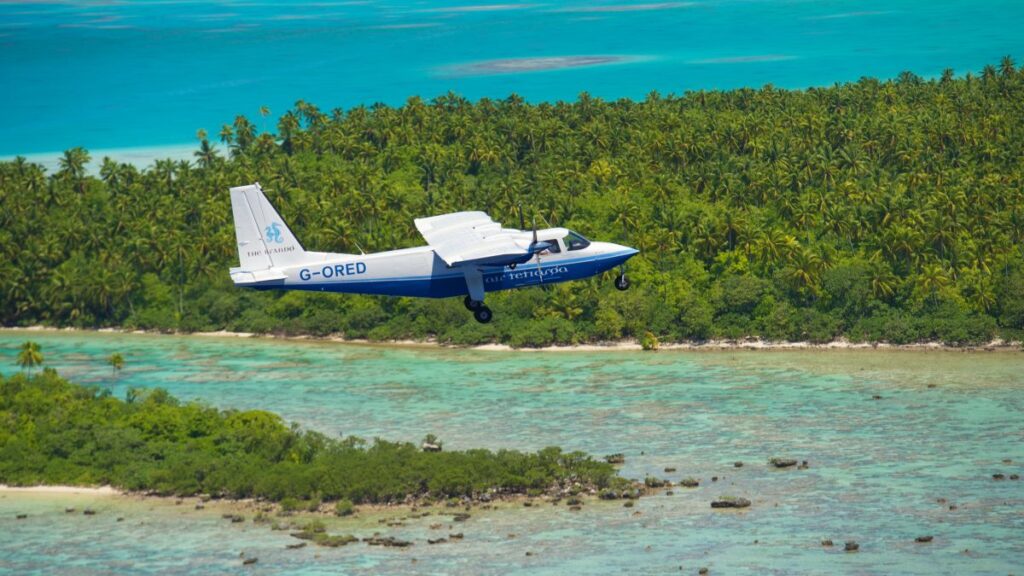
The village has become a place for friends, family and scientists who study the ecology and archeology of the atolls. Eventually the village became a modest hotel run by his Tahitian wife Tarita. The hotel has been operating for more than 25 years, even after Brando left French Polynesia to return to Los Angeles. After his death, Brand’s son Teihotu lived on the island for a while.
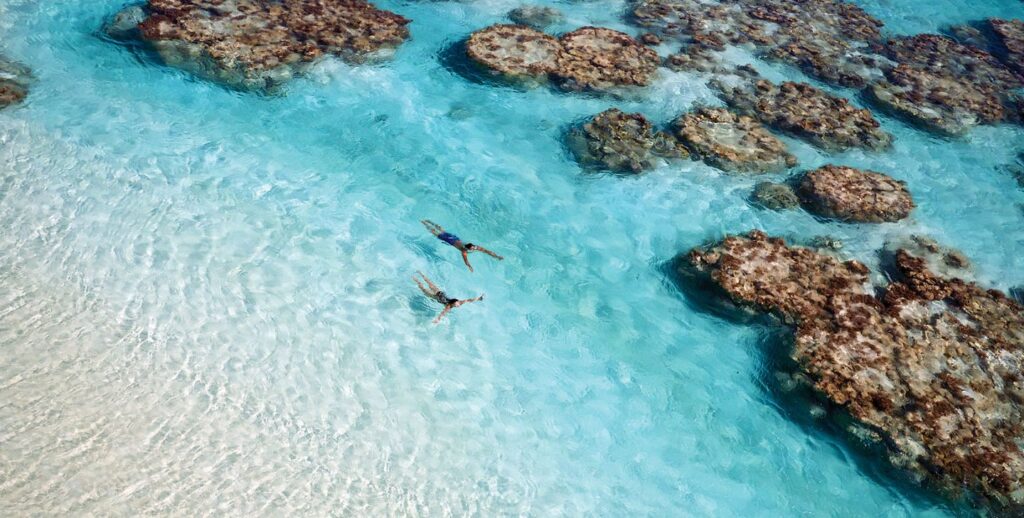
After his death in 2004, the executors of the estate granted development rights to Pacific Beachcomber SC, a Tahitian company that owns hotels throughout French Polynesia. Teti’aroa Pacific Beachcomber SC began construction on Tetiaroa in 2009. The construction went in several phases. In February 2014, it was announced that the Brando Resort building was completed. Brando was officially opened to the public in July 2014. It is an ultra luxurious resort. They are officially committed to protecting the environment and preserving the atolls on which they are located.
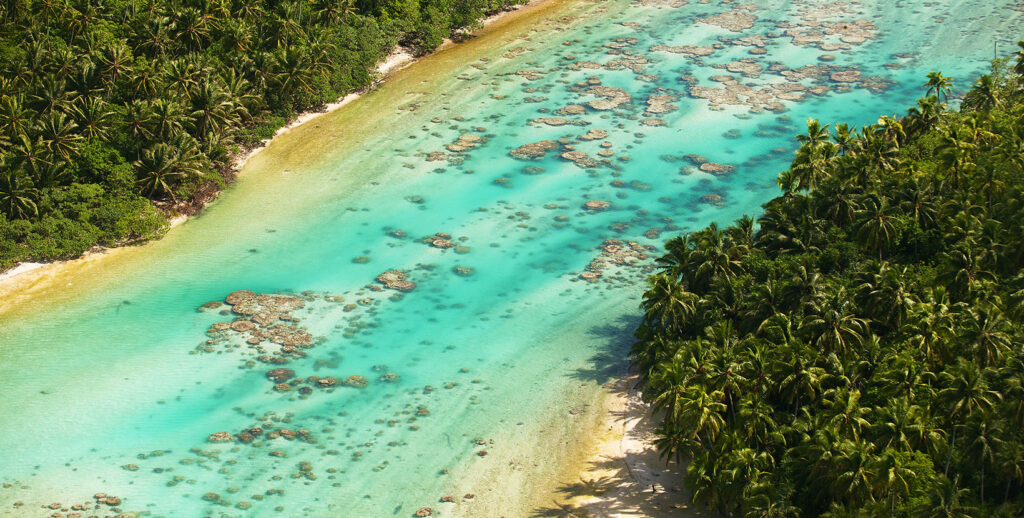
This is from their site:
“We are committed to preserving and protecting the natural splendor and precious biodiversity of Tetiaroa; respecting and supporting Polynesian culture, hospitality and traditions; and achieving a negligible carbon footprint.We will support research, education and outreach aimed at increasing the knowledge of and appreciation for the natural and cultural heritage of tropical islands and their people. And we will use, encourage and support innovation to address local and global environmental and sustainability issues.
As stewards of Tetiaroa, we are committed to preserving and protecting the atoll and being a responsible member of both our local and global communities. We will deal fairly and honestly with our staff and suppliers in an atmosphere of mutual trust, accountability and reward.We will strive to be a model for the rest of the world. We will leave Tetiaroa a better place than when we came and continually seek to enhance the lives of all those who visit.”
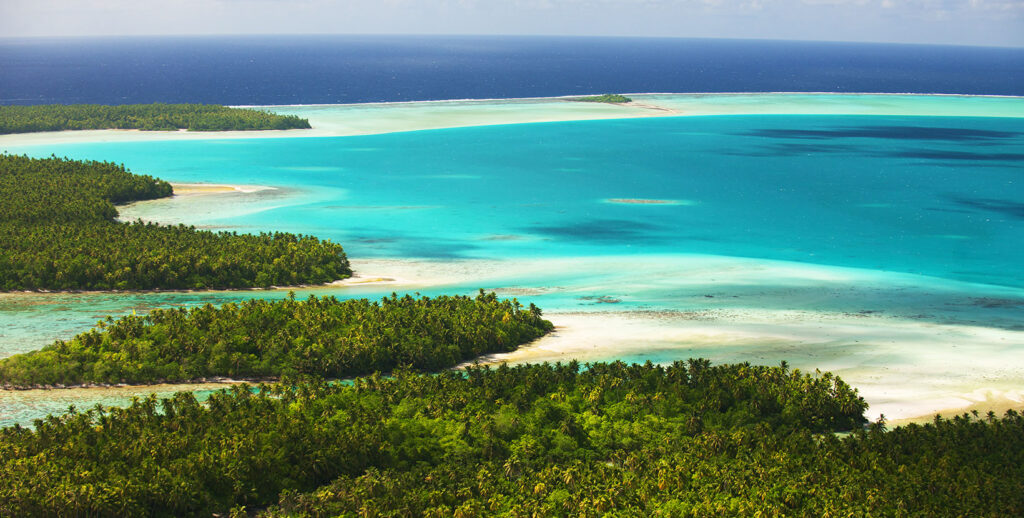
By the way, Barack Obama was in Brando in March 2017, right after his term expired. He had a great time there. That atoll is a luxury resort for such clients. Their slogan is “Save Tetiaroa, save the planet”.
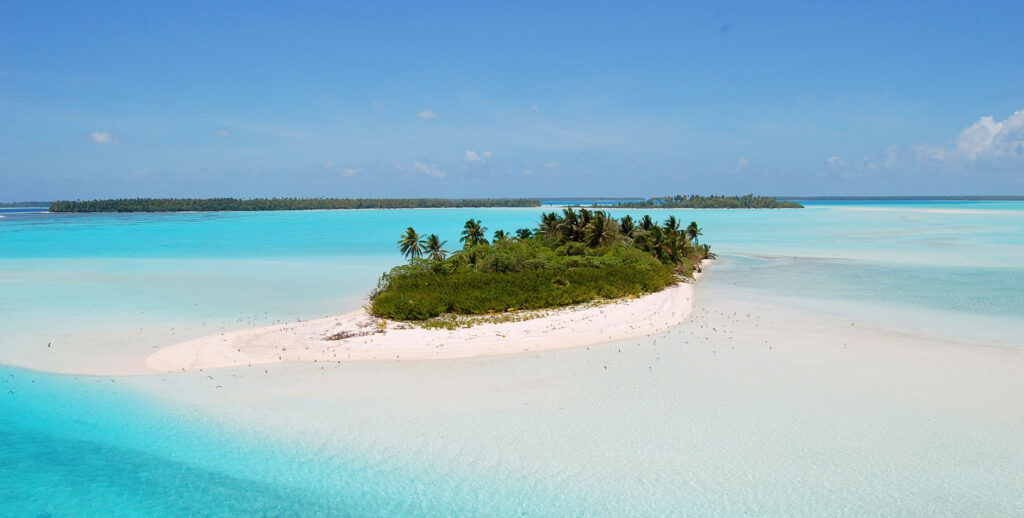
Regardless of Tetiaroa Atoll having a healthy reef, and being somewhat untouched by human activity, there is still much to conserve. According to Island Conservation, Tetiaroa Atoll is one of the most important seabird breeding sites in all of French Polynesia. It is also one of the largest nesting sites for Green Sea Turtles. Also is home to ecologically important and healthy coral reefs, which is why this atoll is specifically of importance in the region.
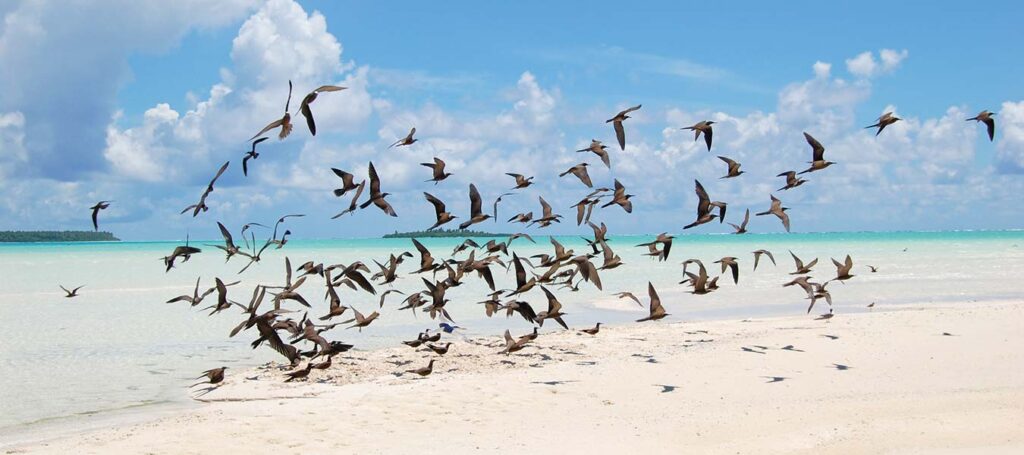
They marked it as a Hope Spot and considered it one of the most pristine marine environments in the South Pacific. They stated that the presence of invasive rats threatens the flora and fauna at Tetiaroa Atoll. Those rats feed on the seeds of native vegetation and attack Green Sea Turtles’ hatchlings, nesting seabirds, and crabs. They are one of the main treats on the islands and atolls, especially isolated ones.
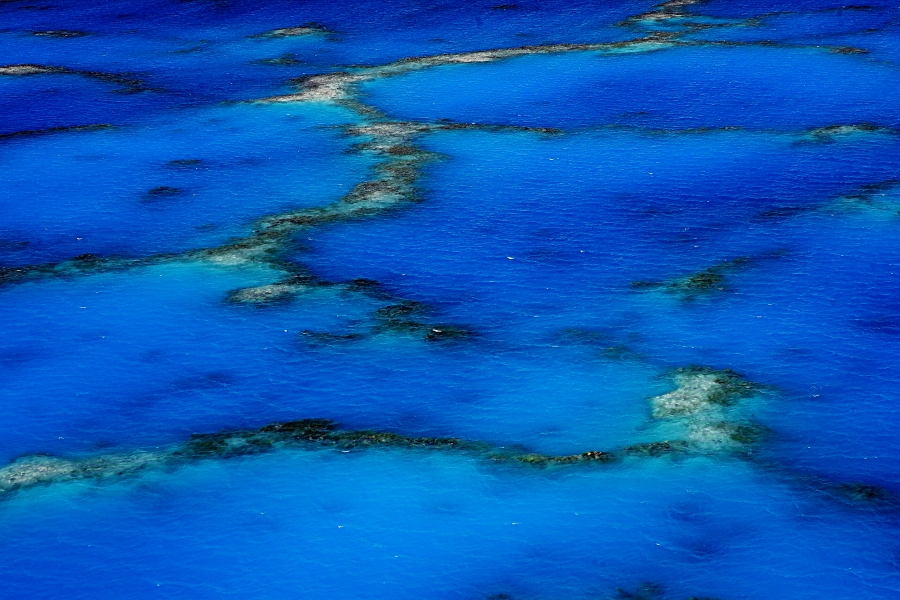
Restoring balance for the atoll’s ecosystem should protect endangered native turtles and birds, and also should enhance the resilience of surrounding coral reefs, and as result, making them more resistant to the impacts of climate changes. Also, restoration should benefit reef fish populations, enhancing food security for local peoples who are connected to healthy coral reefs.
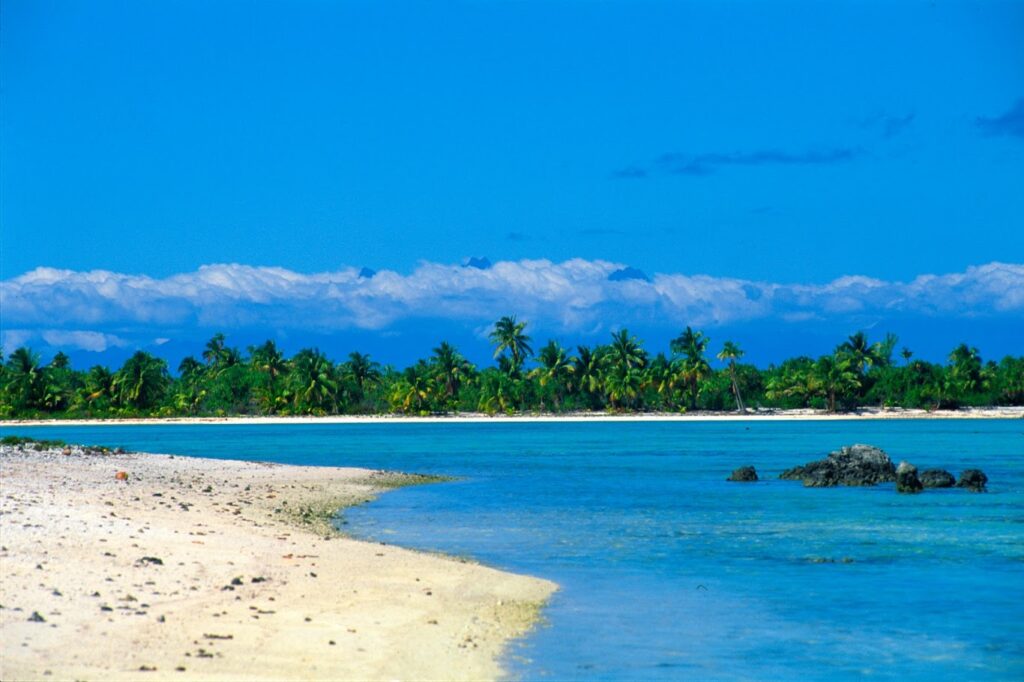
Also, the owners of the atoll established ,,Tetiaroa Society”, with authority and responsibility to manage, conserve and protect the entire atoll. They are working closely with many partners and other ecology-protection groups to protect Tetiaroa Atoll. Here is their ,,Tetiaroa conservation and sustainable use plan” PDF https://www.tetiaroasociety.org/sites/default/files/research-docs/Tetiaroa-CASUP.pdf that has useful stuff to read.
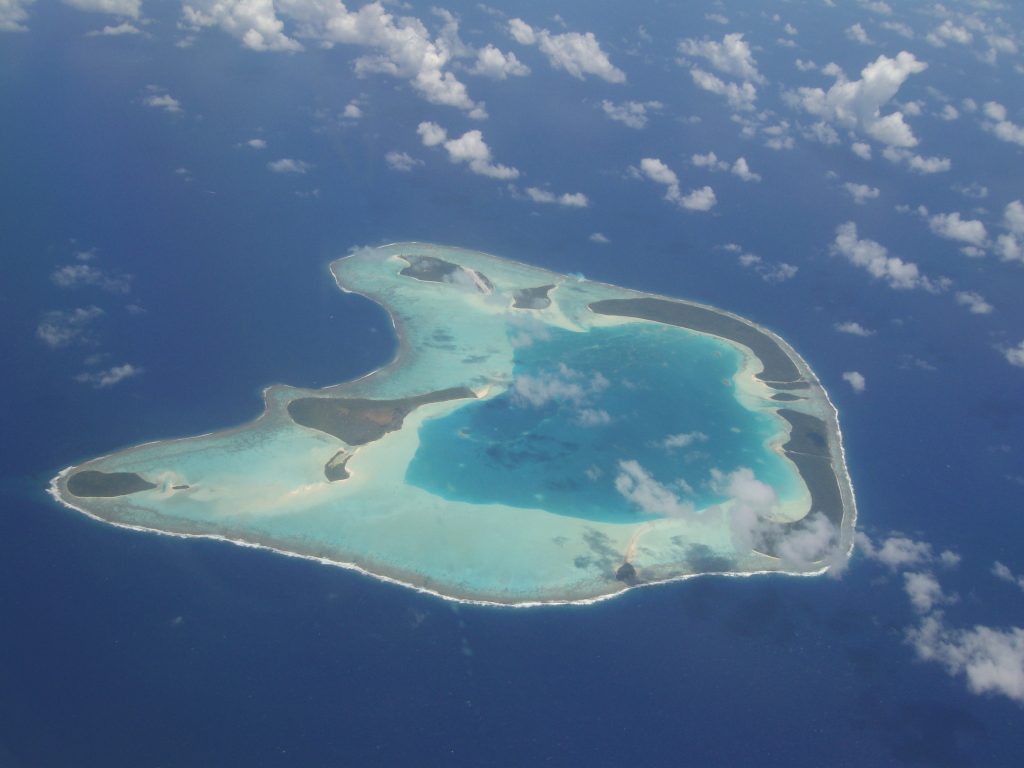
Here is some quote from this plan (it is much larger):
Tetiaroa is a natural wonder of astonishing beauty and significant environmental, historical and
cultural importance. It is vital that this treasure be conserved, restored and protected so that its future is as
rich as its past.
The Conservation and Sustainable Use Plan (“CASUP”) attempts to provide a united vision for the
future of Tetiaroa and a plan for managing this natural marvel to facilitate ongoing preservation and
protection and to make it a model of sustainability. It is hoped that through the CASUP the health, diversity,
and resources of the Tetiaroa terrestrial and marine ecosystems and the wildlife they support, and the
island’s rich cultural heritages, will be protected forever.
Readers of this Overview are cautioned that a review of the entire CASUP is essential to
understanding it. This Overview is intended merely as an introduction and broad overview of the CASUP.
1) Scientific Research
Human activities are driving the twin crises of climate
change and biodiversity loss, making environmental sustainability
the defining issue of our time. Addressing this grand challenge
requires a far better understanding of complex social-ecological
systems and the capacity to predict human and natural change at
the scale of management action. Tetiaroa Society should help in
meeting this challenge through the use of Tetiaroa’s unique
resources in scientific research.
Strategies:
• Form a Scientific Advisory Board (“SAB”) consisting of local and international scientists
(particularly those in the Pacific Region) with expertise in the major scientific disciplines that
underpin Tetiaroa Society’s mission.
• Leverage the considerable international scientific capacity present in French Polynesia.
• Establish facilities (such as the Tetiaroa Ecostation) and recruit staff to support scientific research
on the atoll and communication of its results to key stakeholders.
• Support scientific research on Tetiaroa through work with partner institutions that have the
capacity to help Tetiaroa Society achieve its research goals, as guided by its Scientific Advisory
Board.
2) Coral Reef Ecosystem
On a global view, coral reefs are often called the
rainforests of the sea, both due to the vast amount of species they
harbour, and to the high productivity they yield. Aside from the
hundreds of species of coral, reefs support extraordinary
It is worth mentioning to remember that atolls and islands are very fragile ecosystems, especially those isolated. And Tetiaroa is no exception either. Atolls and islands are subject to climate changes, especially vulnerable to heavy severe storms and rising ocean temperatures and sea levels. Those storms can damage its vegetation, the rising sea can occasionally flood coastal regions and islets, and corals in lagoons are sensitive to rising water temperatures (as seen during recent coral bleaching in Australia). That is why many actions are required to keep those tropical ,,paradises” as safely as possible.
(Post updated in 16. May 2023)
HERE IS OUR BIG TETIAROA ATOLL GALLERY (90+ PICTURES)! Click on the picture, wait for a little until they load in the gallery, and scroll them. (additionally, you can press F11 to enlarge the gallery even further)

